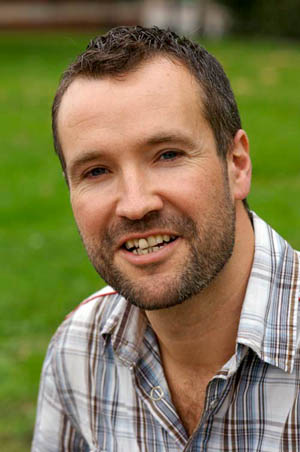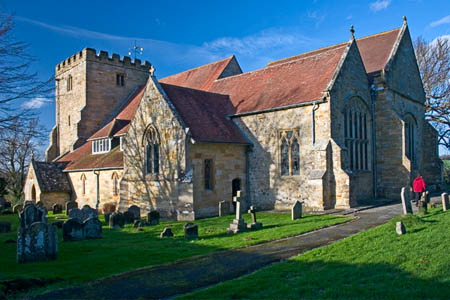Evidence from a 70-year-old woman in Canada helped Ramblers in a victory to gain access on a path in East Sussex.
The path was blocked by an earl who can trace his lineage back to the times of William the Conqueror, but villagers and walkers can now walk along the footpath at the village of Withyham after an inspector ruled the route a right of way.
The disputed path runs through the Buckhurst Estate belonging to William Herbrand Sackville, 11th Earl De La Warr, and passes between the 14th century village church, St Michael and All Angels, and the road through the village on land known locally as the Knoll Field.
Locals said the path had been used for many years until 2000, when it was blocked by a barbed-wire fence and a sign saying ‘private’.
Villagers’ concerns were then taken up by Rambler Malcolm McDonnell, of the parish council rights of way committee, who made a formal application for the route to be recognised as a right of way based on a long history of public use.
For seven years the application was lodged with East Sussex County Council, which then rejected the evidence. An appeal to the Secretary of State led to a public inquiry on 12 and 13 January this year. Inspector Peter Millman threw out the Earl’s arguments and granted the public the right to use the path.
Pamela Morros, a 70-year-old now living in Montreal, Canada, said in a sworn affidavit: “The views from the path are spectacular.”
She first used the path 60 years ago and stated: “The walk down from the churchyard is extremely beautiful. I used it as a child and always believed it to be public. But when visiting in 2003 I was shouted at and told to leave. This path is an intrinsic part of Withyham and Withyham life – a vital, beautiful connection naturally flowing from the church to the road. I cannot see a moral reason for taking this away from the people.”
Earl De La Warr argued that the path had not been used by the public, only his estate staff and those going to church – as a ‘churchway’.
Rosemary Russell, who has lived in Withyham since 1941, said: “I still live in the house I was born in, and I used the path frequently, three or four times a week to go to the church and sometimes on longer walks. As well as Sunday school and normal church services, I joined the choir and later took up bell ringing.
“All such visits were on foot, and the Knoll path was used as a short cut, or just for pleasure when the weather was nice.”
Les Stone, 57, said: “Lots of kids from the village used to play on the Knoll where the path is, sledging in the winter and camping with the Scouts in the summer. I always assumed it was public as it had gates at both ends, and no one ever told me not to use it or gave me permission.”
But Ramblers member Malcolm McDonnell said: “The celebration is tinged with sadness, because, following nine years of delays and misjudgements by East Sussex County Council, at least four villagers who had used the path throughout their lives have not lived to see its re-instatement.”

Tom Franklin: vital vulnerable rights of way are protected
Ramblers’ chief executive Tom Franklin praised local residents and his emphasised the need to keep campaigning to maintain rights of way. “This vital East Sussex path is now open thanks to the villagers who stood up for the public’s rights,” he said. “However, hundreds of paths in England and Wales remain difficult or impossible to use. With local authority budgets under threat from recession, it is vital that councils provide robust funding and political will to ensure that these all too vulnerable rights of way are protected and maintained.”
The Earl boasts that Buckhurst Park has belonged to his family for more than 900 years. The estate is renowned for its pheasant shooting, fishing and clay-pigeon shooting but is best known for being the site of the 100-acre wood described in AA Milne’s Winnie the Pooh books.
